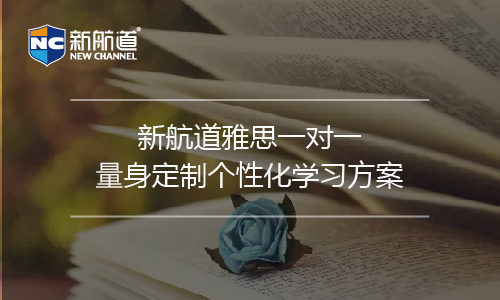劍5Test3雅思閱讀譯文Passage2-日益消失的三角洲
2017/5/14 17:22:05來(lái)源:新航道作者:新航道
摘要:很多雅思考生為了提高雅思閱讀分?jǐn)?shù),做了很多題目,但成效不大,這時(shí)可以想想是不是備考書籍選擇不當(dāng)造成,建議考生們多多看劍橋雅思真題。上海新航道雅思小編第一時(shí)間給大家?guī)?lái)了劍5Test3雅思閱讀譯文Passage2-日益消失的三角洲。希望可以幫助廣大雅思考生輕松備考雅思。
很多雅思考生為了提高雅思閱讀分?jǐn)?shù),做了很多題目,但成效不大,這時(shí)可以想想是不是備考書籍選擇不當(dāng)造成,建議考生們多多看劍橋雅思真題。上海新航道雅思小編第一時(shí)間給大家?guī)?lái)了劍5Test3雅思閱讀譯文Passage2-日益消失的三角洲。希望可以幫助廣大雅思考生輕松備考雅思。
劍5Test3雅思閱讀譯文Passage2-日益消失的三角洲
Disappearing Delta
日益消失的三角洲
A The fertile land of the Nile delta is being eroded along Egypt’s Mediterranean coast at an astounding rate,in some parts estimated at 100 metres per year.In the past,land scoured away from the coastline by the currents of the Mediterranean Sea used to be replaced by sediment brought down to the delta by the River Nile,but this is no longer happening.
A 尼羅河三角洲在地中海沿岸的肥沃土地正以驚人的速度遭到侵蝕。在某些地段,估計(jì)侵蝕速度會(huì)達(dá)到100米/年。過(guò)去,由地中海洋流沖刷掉的沿岸土地會(huì)得到由尼羅河帶到三角洲的土壤的補(bǔ)充,但是現(xiàn)在情況卻發(fā)生了改變。
B Up to now, people have blamed this loss of delta land on the two large dams at Aswan in the south of Egypt,which hold back virtually all of the sediment that used to flow down the river. Before the dams were built,the Nile flowed freely carrying huge quantities of sediment north from Africa’s interior to be deposited on the Nile delta.This continued for 7,000 years,eventually covering a region of over 22,000 square kilometres with layers of fertile silt.Annual flooding brought in new, nutrient-rich soil to the delta region,replacing what had been washed away by the sea,and dispensing with the need for fertilizers in Egypt’s richest food-growing area.But when the Aswan dams were constructed in the 20th century to provide electricity and irrigation,and to protect the huge population centre of Cairo and its surrounding areas from annual flooding and drought,most of the sediment with its naturaI fertilizer accumulated up above the dam in the southern, upstream half of Lake Nasser, instead of passing down to the delta.
B 到目前為止,人們一直在指責(zé)埃及南部阿斯旺的兩座大壩,認(rèn)為它們?cè)斐闪巳侵尥恋氐牧魇В@兩座大壩幾乎將所有原來(lái)順尼羅河直下的淤泥都阻擋住了。在建壩之前,尼羅河可以自由地流動(dòng),攜帶非洲北部?jī)?nèi)陸地區(qū)的大量泥沙、淤積到尼羅河三角洲地區(qū),這種情況一直持續(xù)了 7000年,最終將這個(gè)22,000多平方公里的土地覆蓋上了一層又一層肥沃的淤泥。每年的洪水泛濫都會(huì)給尼羅河三角洲地區(qū)帶來(lái)新的富有營(yíng)養(yǎng)的淤泥,補(bǔ)充那些被海水沖刷走的土壤。這樣一來(lái),盡管這個(gè)地區(qū)是埃及糧食產(chǎn)量最高的地區(qū),卻不需施加肥料。但是,到了 20世紀(jì),人們建造了阿斯旺水壩來(lái)提供電力和進(jìn)行灌溉,并保護(hù)開羅這個(gè)人口大城及其周邊地區(qū)免遭洪水和干旱。自那時(shí)起,大多數(shù)淤泥連帶其中的豐富養(yǎng)分都在大壩南部,Nasser湖的上游淤積起來(lái),而沒(méi)有被帶入尼羅河三角洲。
C Now, however, there turns out to be more to the story.It appears that the sediment-free water emerging from the Aswan dams picks up silt and sand as it erodes the river bed and banks on the 800-kilometre trip to Cairo.Daniel Jean Stanley of the Smithsonian Institute noticed that water samples taken in Cairo,just before the river enters the delta,indicated that the river sometimes carries more than 850 grams of sediment per cubic metre of water — almost half of what it carried before the dams were built. ‘I’m ashamed to say that the significance of this didn’t strike me until after I had read 50 or 60 studies,’ says Stanley in Marine Geology.‘There is still a lot of sediment coming into the delta, but virtually no sediment comes out into the Mediterranean to replenish the coastline.So this sediment must be trapped on the delta itself.’
C 然而,現(xiàn)在看來(lái),情況似乎不這么簡(jiǎn)單。從阿斯旺水壩流出的無(wú)沉淀物的河水在到達(dá)開羅前的800公里的路程當(dāng)中,似乎在不斷地侵蝕其流經(jīng)的河床和河岸,泥沙含量在不斷增加。Smithsonian學(xué)院的Daniel Jean Stanley注意到,從河水流人三角洲前的開羅河段中采集的水樣表明,尼羅河攜帶的泥沙含量有時(shí)會(huì)多于850g/m3,差不多相當(dāng)于建壩前的一半。Stanley在《海洋地質(zhì)學(xué)》雜志上說(shuō):“說(shuō)起來(lái)有些羞愧,我讀了 50到60項(xiàng)研究才驚訝地發(fā)現(xiàn)這一重大情況,仍然有大量淤泥流入三角洲地區(qū),但卻幾乎沒(méi)有淤泥由此處流入地中海來(lái)補(bǔ)充海岸線,這就說(shuō)明這些淤泥肯定淤積在了三角洲地區(qū)。”
D Once north of Cairo, most of the Nile water is diverted into more than 10,000 kilometres of irrigation canals and only a small proportion reaches the sea directly through the rivers in the delta.The water in the irrigation canals is still or very slow-moving and thus cannot carry sediment, Stanley explains. The sediment sinks to the bottom of the canals and then is added to fields by farmers or pumped with the water into the four large freshwater lagoons that are located near the outer edges of the delta.So very little of it actually reaches the coastline to replace what is being washed away by the Mediterranean currents.
D 從前在開羅北部,尼羅河水大部分被引入長(zhǎng)達(dá)1,000公里的灌溉渠道,只有一小部分通過(guò)三角洲地區(qū)的河流直接匯入海洋。Stanley解釋說(shuō),因?yàn)楣喔惹乐械暮铀遣涣鲃?dòng)的或流速很慢,所以不會(huì)攜帶泥沙。泥沙會(huì)沉積到灌溉渠的底部,然后由農(nóng)民施加到田里,或者和河水一起被抽人三角洲外緣附近的四大淡水瀉湖中。所以,事實(shí)上只有很小的一部分泥沙到達(dá)海岸線,補(bǔ)充被地中海洋流沖刷走的土壤。
E The farms on the delta plains and fishing and aquaculture in the lagoons account for much of Egypt’s food supply.But by the time the sediment has come to rest in the fields and lagoons it is laden with municipal, industrial and agricultural waste from the Cairo region, which is home to more than 40 million people.’Pollutants are building up faster and faster,’ says Stanley.
E 三角洲平原的農(nóng)業(yè)和瀉湖地區(qū)的漁業(yè)和水產(chǎn)養(yǎng)殖業(yè)為埃及提供了大部分食物。但當(dāng)淤泥開始逐漸在田里和瀉湖沉積的時(shí)候,淤泥中已經(jīng)含有大量來(lái)自開羅這個(gè)人口超過(guò)4000萬(wàn)城市的工業(yè)和農(nóng)業(yè)廢棄物。Stanley說(shuō):“污染物增加的速度越來(lái)越快。”
Based on his investigations of sediment from the delta lagoons, Frederic Siegel of George Washington University concurs. ‘In Manzalah Lagoon, for example, the increase in mercury, lead, copper and zinc coincided with the building of the High Dam at Aswan, the availability of cheap electricity, and the development of major power-based industries,’ he says. Since that time the concentration of mercury has increased significantly. Lead from engines that use leaded fuels and from other industrial sources has also increased dramatically. These poisons can easily enter the food chain, affecting the productivity of fishing and farming. Another problem is that agricultural wastes include fertilizers which stimulate increases in plant growth in the lagoons and upset the ecology of the area, with serious effects on the fishing industry.
喬治華盛頓大學(xué)的Frederic Siegel根據(jù)自己對(duì)尼羅河三角洲地區(qū)瀉湖沉積物的調(diào)查,對(duì)Stanley的說(shuō)法表示贊同。他說(shuō):“以Manzalah瀉湖為例,隨著阿斯旺高壩的建設(shè)、廉價(jià)電力的使用和大型耗電工業(yè)的發(fā)展,湖中汞、鉛、銅和鋅的含量也增多了。”從那時(shí)起,汞的濃度便大幅上升。使用含鉛燃料的發(fā)動(dòng)機(jī)產(chǎn)生的鉛和其他工業(yè)源產(chǎn)生的鉛也大幅度增加。這些有害物質(zhì)很容易就會(huì)進(jìn)入到食物鏈中,從而影響漁業(yè)和農(nóng)業(yè)的產(chǎn)量。另一個(gè)問(wèn)題就是包括化肥(殘留物)在內(nèi)的農(nóng)業(yè)廢棄物會(huì)刺激瀉湖中植物的迅速生長(zhǎng),擾亂該地區(qū)的生態(tài)平衡,進(jìn)而對(duì)漁業(yè)產(chǎn)生嚴(yán)重的影響。
F According to Siegel, international environmental organisations are beginning to pay closer attention to the region, partly because of the problems of erosion and pollution of the Nile delta, but principally because they fear the impact this situation could have on the whole Mediterranean coastal ecosystem. But there are no easy solutions. In the immediate future, Stanley believes that one solution would be to make artificial floods to flush out the delta waterways, in the same way that natural floods did before the construction of the dams. He says, however, that in the long term an alternative process such as desalination may have to be used to increase the amount of water available. ‘In my view, Egypt must devise a way to have more water running through the river and the delta,’ says Stanley. Easier said than done in a desert region with a rapidly growing population.
F 據(jù)Siegel說(shuō),國(guó)際環(huán)保組織開始日益關(guān)注這一地區(qū),一部分原因是因?yàn)榍治g問(wèn)題和尼羅河三角洲污染的問(wèn)題,但主要原因還是他們害怕這種情況會(huì)影響到整個(gè)地中海沿岸的生態(tài)系統(tǒng)。可是對(duì)于這個(gè)問(wèn)題并沒(méi)有簡(jiǎn)單的解決方案。Stanley認(rèn)為,在不遠(yuǎn)的將來(lái),使用人工洪水,像建造大壩前自然洪水那樣沖刷三角洲的水道可能會(huì)是一種解決方案。但是,他又說(shuō),從長(zhǎng)遠(yuǎn)角度來(lái)看,可能需要采取其他的作法(如海水淡化)來(lái)增加可用水的數(shù)量。Stanley說(shuō):“我認(rèn)為,埃及必須設(shè)計(jì)出一種方案,使更多的水流入尼羅河,流經(jīng)三角洲地區(qū)。”在這樣一個(gè)人口迅速增長(zhǎng)的沙漠地區(qū),做到這一點(diǎn)的確不是一件容易的事。
以上就是小編為大家?guī)?lái)關(guān)于《劍橋雅思5真題》閱讀部分供大家閱讀參考,新航道雅思資料頻道將第一時(shí)間為考生發(fā)布最全、最新、最專業(yè)的雅思資訊及雅思考試資料及機(jī)經(jīng).
免費(fèi)獲取資料
熱報(bào)課程
- 雅思課程
| 班級(jí)名稱 | 班號(hào) | 開課時(shí)間 | 人數(shù) | 學(xué)費(fèi) | 報(bào)名 |
|---|
免責(zé)聲明
1、如轉(zhuǎn)載本網(wǎng)原創(chuàng)文章,情表明出處
2、本網(wǎng)轉(zhuǎn)載媒體稿件旨在傳播更多有益信息,并不代表同意該觀點(diǎn),本網(wǎng)不承擔(dān)稿件侵權(quán)行為的連帶責(zé)任;
3、如本網(wǎng)轉(zhuǎn)載稿、資料分享涉及版權(quán)等問(wèn)題,請(qǐng)作者見稿后速與新航道聯(lián)系(電話:021-64380066),我們會(huì)第一時(shí)間刪除。
全真模擬測(cè)試
姓名:
電話:
雅思動(dòng)態(tài)

DeepSeekx雅思官方:中國(guó)考生...
制作:每每








